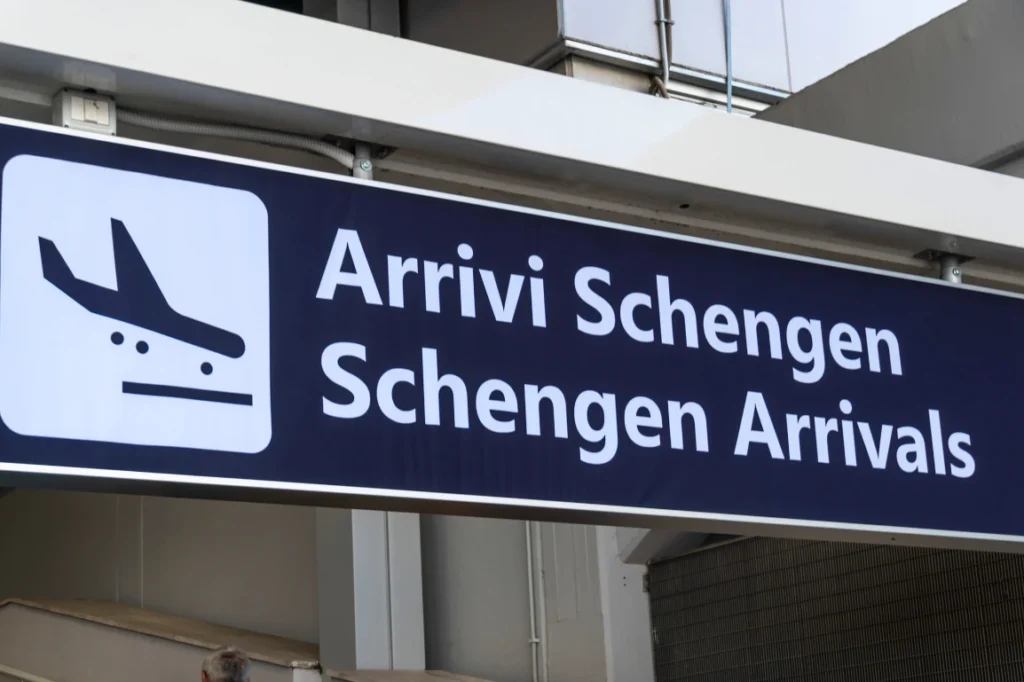Home > The Visa Information System (a guide for 2025)
The Visa Information System (a guide for 2025)
If you've ever applied for a Schengen visa, or you're in the process now, you may have come across the term Visa Information System. While you don't really need to know about the Visa Information System in order to successfully apply for a visa, you may be curious about it or would like to know more about how your personal information is being stored.
We completely understand. Knowing what information about you is out there, how it is stored, and who has access to it is more important than ever in today's highly digital era.
The Visa Information System is a really important part of not only the visa application process, but also the security of the entire Schengen area itself.

What is the Visa Information System?
The Visa Information System, or VIS for short, is a database that stores information about Schengen visa applicants, like biometric fingerprints and application information.
Managed by the eu-LISA, the VIS is highly secure, regularly maintained, and monitored.
What does VIS do?
According to the eu-LISA's official website, the Visa Information System authorizes consulates in non-EU countries to connect with the Schengen zone's external border. This allows important visa information to be accessible when and where it may be needed, such as when verifying someone's identity at a border crossing.
Thanks to the secure transfer of information, border control authorities can quickly confirm the identity of a traveler, as well as the legitimacy of their visa.

Data security measures
eu-LISA makes sure that the VIS is secure in several different ways.
First, there are strict access controls in place, meaning only specific people and groups, such as authorized consulates and border guards, can access the data and information stored inside.
When data is exchanged in the VIS, such as from country to country, it is encrypted. On top of that, there is 24/7 monitoring, with important security features like intrusion detection in place.
To help with the overall security, data isn't stored in the VIS forever. It's only stored for a certain amount of time (typically 5 years), and then it is deleted from the system.
Once the EU VAP is in place, for example, travelers will need to give their biometrics (fingerprints) every 5 years so it remains in the system.
How VIS helps the Schengen area
The Visa Information System helps the Schengen area (and the people who move in and out of it) in several ways.
First and foremost, security as detailed above. But what does that look like in more tangible terms?
The VIS allows for procedures that are quicker and clearer for visitors who need Schengen visas. Thanks to its implementation of biometric technology, travelers' personal information is more secure, especially against things like identity theft.
For visitors seeking asylum, VIS helps to support their processing.
For the zone itself, meaning the member countries and their citizens and residents, the VIS helps to reduce the risk of visa fraud/visa shopping. It also helps border control identify those who have overstayed their visas, as well as other important roles, like supporting authorities in preventing internal security threats.
One of the main reasons that VIS was created was to help mitigate against visa shopping, as noted above.
Visa shopping is when visa applicants submit multiple Schengen visa applications to multiple consulates in order to try to increase their chances of approval. It can also be when a traveler applies for a country that they think will be more likely to approve their visa, but the country in question isn't their intended destination.
For instance, a traveler might think they have a better chance of their visa getting approved for Greece, though they intend to go to France. In which case, the traveler should be applying for a Schengen visa for France, not Greece.

The history of the Visa Information System
In the 1900s-early 2000s, EU and Schengen member states saw the need for a shared database, where member countries could easily and securely share need-to-know information.
This vision was realized in 2004 when the EU approved the creation and implementation of the VIS.
It took a few years to build the highly secure system, as well as test it for any holes or flaws. Once it was built, tried, and tested, it was first launched in North Africa in October 2011.
Over the next few years, the Visa Information System was rolled out, and by 2016, it was worldwide.